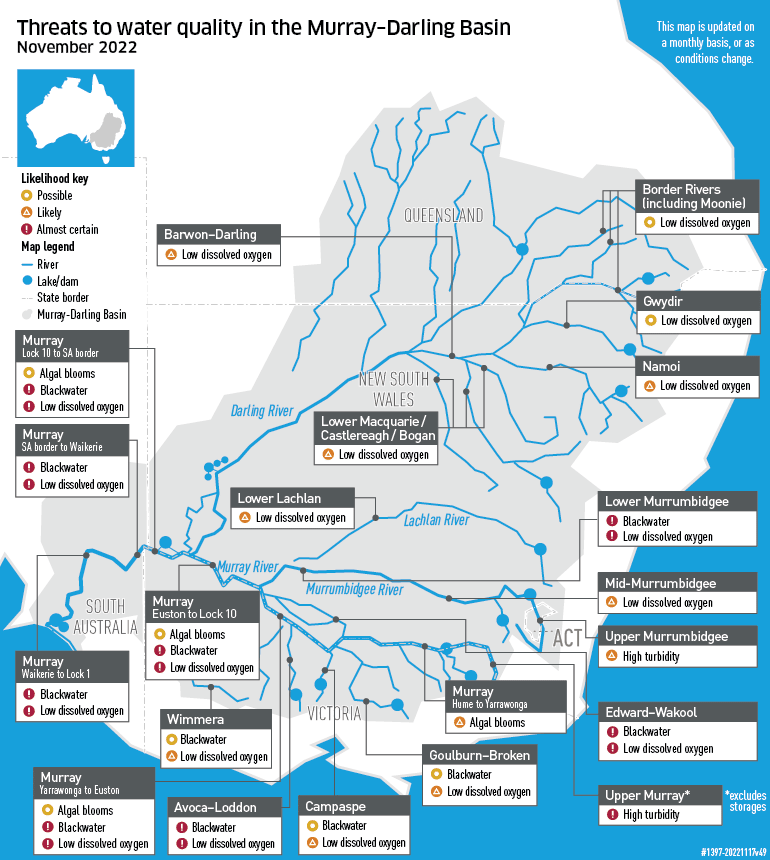Record rain is prompting water quality concerns across the Murray–Darling Basin, with the latest water quality threats map published by the MDBA, showing the main areas of concern.

According to the Bureau of Meteorology, rainfall was the highest on record for October for large parts of the Murray–Darling Basin in New South Wales, Victoria and Queensland. Daily inflows in the Murray system for November are nearly 7 times the long-term November average.
The long-term average for daily inflows in the Murray system, including Darling River, Victorian tributaries and Murrumbidgee River, in November is 30,000 megalitres a day. As of this week daily inflows are around 205,000 megalitres a day.
Asitha Katupitiya, General Manager of River Management at the Murray–Darling Basin Authority (MDBA) said water temperatures in the Basin are increasing as summer approaches, exacerbating blackwater and encouraging blue-green algae growth.
“As a result of these record flows and rising temperatures, water quality issues have increased as high flows move through catchments, and floodwaters bring organic material and nutrient loads into river systems.
“Several rivers including the Murray, Edward-Wakool, lower Murrumbidgee are at high risk of blackwater and/or low dissolved oxygen,” Mr Katupitiya said.
“We have seen numerous fish deaths.

“The Murray–Darling Basin Authority and state authorities monitor water quality across the Basin year-round.
“During this time, we ask communities to stay vigilant for impacts on native fish in the coming weeks and report any events to state authorities,” Mr Katupitiya said.
To report fish deaths or water quality issues in your area, see our contact information page.